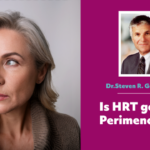In yesterday’s New York Times Science section, there was an extremely interesting article entitled, “Researchers Track an Unlikely Culprit in Weight Gain.” It has been known for quite some time that estrogen promotes lean body mass. At menopause, women no longer make estrogen and many patients experience the upsetting phenomenon of developing redistribution of weight to the abdomen; in medical terms known as “centripetal adiposity,” or what it says in the article, turning women from “pears” to “apples.” In addition, most of you know that at menopause, women lose bone because bone is an estrogen dependent organ. When women stop making estrogen at menopause, there is a fairly rapid loss of bone.
Now for the interesting part. Estrogen is produced by ovaries in response to a substance that comes from the pituitary gland known as FSH (follicle stimulating hormone). Follicle stimulating hormone causes follicles in the ovary to produce estrogen. At menopause the ovary is incapable of producing estrogen and so the pituitary puts out more and more FSH in an attempt to get the ovary to respond. In premenopausal women there is what is called a negative feedback loop. That means that when estrogen is produced it drives the level of FSH from the pituitary to a very low level. Thus in menopause, FSH is high and estrogen is low, in premenopause estrogen is high and FSH is low.
The article in yesterday’s Times talks about the fact that it may be FSH by itself that results in the deposition of fat to the midriff as well as a loss of bone. Apparently, researchers blocked FSH with antibodies without giving estrogen and found that in experimental animals, in this case mice, they did not deposit fat nor did they lose bone.
This is very intriguing. However it is unlikely that such antibodies would be developed any time soon for use in menopausal women. Those women who do choose to go on estrogen in the form of hormone replacement at the time of menopause will, in fact, drive down FSH levels achieving much of the same outcome. Thus, regardless of whether it is actually the elevation in FSH or the actual use of estrogen that helps maintain bone mass and prevent accumulation of central fat in the belly, the end result will be the same in menopausal women who use HRT.
Fortunately, many of you have heard me speak of a new paradigm for delivering HRT (hormone replacement therapy) in a much safer fashion than previously thought. The product, Duavee, is estrogen with a SERM rather than an estrogen with progesterone. Both the estrogen in Duavee (Premarin) and SERMs, in general, have been shown to reduce breast cancer. Thus, this new combination is a much better form of delivering the benefits of the estrogen (relief of any night sweats and hot flashes, prevention of bone loss, and promoting lean body mass, not to mention prevention of vaginal atrophy) than traditional estrogen plus progesterone. So many of my patients who are on Duavee for hormone replacement therapy come and say to me that their friends all tell them, “you are crazy to be on HRT.” My comment to these patients is to tell their friends that, “this is not your mother’s HRT.”
Dr Steven R. Goldstein is a past President of the International Menopause Society and a Certified Menopause Practitioner. As a HRT specialist NYC he has helped thousands of women cope with the symptoms of Menopause
This post was last modified on January 22, 2025 9:24 am




